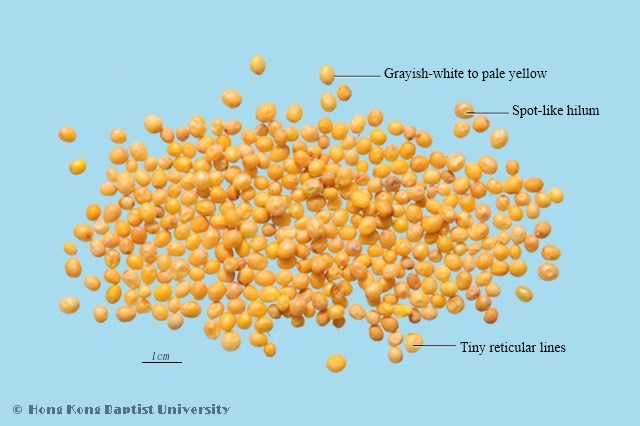Production RegionsPrimarily produced in the Chinese provinces of Anhui, Henan, Sichuan, Shaanxi.
Macroscopic FeaturesWhite jie zi: Sub-spherical, 1~1.6mm diameter, seed coat is dark yellow to brownish-yellow; a few are reddish-brown. Using a magnifier, the surface of seed has a slight reticular pattern, with obvious spotted hilum. Enlarged in water, the seed coat peels off and 2 cotyledons can be seen, there is a fold along the main vein, radicle is posited between 2 cotyledons. Dry pieces have no odor, taste like oil, then acrid and spicy. After being crushed and moistened, it produces special strong acrid stench. Yellow jie zi: relatively small, 1~2mm diameter. Externally yellow to brownish-yellow, few are dark reddish-brown. After crushed and watered, it produces special strong acrid odor.
Quality RequirementsSuperior medicinal material is full, even sized, yellow or reddish-brown.
FunctionsWarms the lung, removes phlegm, promotes qi, dissipates stasis, frees channels, relieves pain. Apply to cough due to cold phlegm-retention, chest swelling and pain, phlegm stagnation of channels, joint numbness and pain, phlegm-damp oozing in body, yin furuncle and swelling pain.
OriginThe dried mature seed of Sinapis alba L., or Brassica juncea (L.) Czern. et Coss.(Bassicaceae). First is called ‘white jie zi’, second is called ‘yellow jie zi’.
